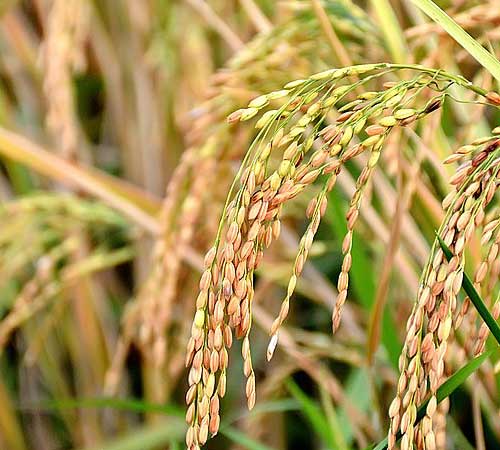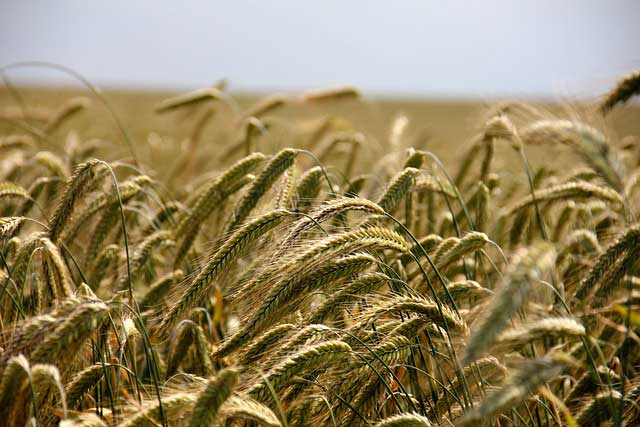Plant introduction is the process of bringing plant species or varieties from one geographical location or ecological zone to another for the purpose of studying, evaluating, and potentially using them in agriculture, horticulture, or other industries. Plant introduction has been an important tool for plant breeding and crop improvement. It has allowed breeders to expand the genetic diversity of crop plants, which can increase their resilience to pests, diseases, and environmental stresses. The present articles discusses on the topic ‘What is Plant Introduction?’
Learning objectives: In the present post we will discuss (1). The Concept of Plant Introduction – Domestication and Acclimatization, (2). Types of plant introduction – Primary Introduction and Secondary Introduction, (3). Purpose of Plant Introduction, (4). The Procedure of Plant Introduction, (5). Concept of Plant Quarantine and Plant Quarantine Centers in India, (6). Merits and Demerits of Plant Introduction and (7). Organizations/Agencies that perform the Plant Introduction in a Country.
What is Plant Introduction?
Definition: Transfer of crop plants from the places of their cultivation or origin to new areas or different climatic and environmental conditions in which they were never grown before. Plant Introduction is the process of introducing exotic crop species to new areas for their cultivation. It is an ancient practice, people used to carry plants and animals while they migrate from one place to another. Plant introduction is one of the easiest methods of crop improvement programme as a part of Plant Breeding.
Aspects of Plant Introduction
Ø Plant introduction involves TWO aspects.
(1). Domestication: The process by which wild species are brought under cultivation through changes in their behavior.
(2). Acclimatization: The process by which an introduced plant variety is made well adapted to the new edaphic (soil) and climatic conditions through endurance and specialization.
Ø Both the aspects (domestication and acclimatization) has to be fulfilled in a successful plant introduction programme.
Types of Plant Introduction
Ø Plant introduction is of TWO types:
(1). Primary Introduction
(2). Secondary Introduction
(1). Primary Introduction
Ø Definition: The introduction of a plant variety to new areas or to different agroclimatic conditions for cultivation without changing its original genotype.
Ø The new climatic condition should be ideal for the success of the primary introduction.
Ø Such an introduced plant to a new area is called an Exotic Variety.
Ø Exotic Variety: Any foreign variety, directly introduced for commercial cultivation in another country.
Ø Example:
$. Sonora 64: A wheat variety introduced from Mexico to India. They were directly released for commercial cultivation.
$. TN-1 (Taichung Native 1): A semi-dwarf variety of rice from Taiwan
$. IR-8: Rice variety from International Rice Research Institute, Philippines
(2). Secondary Introduction
Ø Definition: The introduction of wild varieties or cultivars after selection or hybridization for raising genetically improved varieties.
Ø Selection or Hybridization will be done from the plants of primary introduction.
Ø The secondary introduction is more common in plant breeding programmes.
Ø The secondary introduction is more useful than the primary introduction.
Ø Example: Kalyan Sona and Sonalika are the two varieties of wheat selected from the materials introduced from International Maize and Wheat Improvement Center (CIMMYT), Mexico. These two varieties of wheat were extensively cultivated during the green revolution in India.
Purpose of Plant Introduction
Ø The major purposes of plant introduction are the following:
Ø Economic use in Agriculture, Forestry and Industry: New varieties of crops are introduced to the new areas for the use as a new source of food, oil, fiber, wood, fruits etc. They can also be used as breeding materials for hybridization.
Ø Study of origin and evolution: Helps to study the distribution of crop plants and their wild relatives in different geographical regions.
Ø Conservation of Germplasm and Biodiversity: Plant introduction is a method of conservation of germplasm and genetic diversity. Also helps to protect some species from extinction.
Merits of Plant Introduction
Plant Introduction has the following merits:
$. It is the simplest and easiest method for new varieties
$. They can be released as a new variety directly or after selection
$. A method of introducing new crop plants to new areas
$. Introduced crops in India: Maize, Potato, Tomato, Papaya etc.
$. An easy method of plant germplasm collection and conservation
$. An effective method for the conservation of threatened plants
$. Plant introduction can be applicable to self-pollinated, cross-pollinated and vegetatively propagated crops
| You may also like NOTES in... | ||
|---|---|---|
| BOTANY | BIOCHEMISTRY | MOL. BIOLOGY |
| ZOOLOGY | MICROBIOLOGY | BIOSTATISTICS |
| ECOLOGY | IMMUNOLOGY | BIOTECHNOLOGY |
| GENETICS | EMBRYOLOGY | PHYSIOLOGY |
| EVOLUTION | BIOPHYSICS | BIOINFORMATICS |
The Procedure of Plant Introduction
Ø The plant introduction programme is a multi-step process.
Ø The major steps in plant introduction are:
(1). Procurement of the plant or germplasm
(2). Packing and forwarding of the procured material
(3). Plant quarantine
(4). Cataloguing
(5). Evaluation
(6). Multiplication and Distribution
(1). Procurement of Plant
Ø Procurement can be done by Exchange, Purchase or as Free Gift.
Ø Plants are procured as propagules such as seeds, seedlings, cuttings, buds etc.
(2) Plant Quarantine
Ø Quarantine is a prophylactic measure to prevent the arrival and spread of new diseases, insects and weeds from other countries.
Ø Destructive Insects and Pests Act (1914) is an act in India to prevent the entry of new diseases, insects and weeds to India from other countries.
Ø Quarantine offices have been instituted at all seaports and international airports as part of the Destructive Insects and Pests Act, 1914.
Ø Quarantine ensures that:
$. Imported plant materials are free from diseases, pathogens, pests and weeds.
$. They check whether the introduced plant material bears a Phyto-sanitation certification issued by the sender.
$. Phyto-sanitation certificate ensures that the introduced plant is free from diseases, pests and weeds.
$. If the Phyto-sanitation certificate is not attached, the plant material will be rejected and destroyed by the quarantine department.
Plant Quarantine Organizations in India
Ø NBPGR: National Bureau of Plant Genetic Resources, New Delhi: For the quarantine procedure of Agricultural and Horticultural Crops.
Ø FRI: Forest Research Institute, Dehradun: For Forest Trees and Timber Trees.
Ø BSI: Botanical Survey of India, Kolkatta: For plants of taxonomic importance.
Ø Directorate of Plant Protection, Quarantine and Storage, Faridabad, Haryana deals with the quarantine inspection of food grains and other items imported to India for human consumption.
(3). Cataloguing
Ø Cataloguing in the plant introduction programme is a process by which the details regarding the procured specimens are properly recorded after the quarantine.
Ø A specific number is given for each specimen imported to India
Ø Then, it is included under one of the following classes
Ø Exotic collection (with prefix – EC)
Ø Indigenous collection (with prefix – IC)
Ø Indigenous wild collection (with prefix – IW)
(4). Evaluation
Ø Evaluation is the thorough assessment of the introduced plant.
Ø The evaluation assesses the adaptability, resistance capacity, yield potential and performance of the introduced plant.
Ø Evaluation is done by Field Trials at various Plant Breeding / Research Stations under different conditions.
(5). Multiplication and Distribution
Ø The introduced variety with promising results in the evaluation step is subjected to Additional Field Trials, Selection, Propagation and Certification.
Ø After the certification, it is released for commercial cultivation as a new variety.
Advantages of Plant Introduction
Ø As a new variety: The introduced plant can be directly released as a new variety for commercial cultivation. E.g. Sonora variety of wheat and TN-I and IR-8 variety of rice.
Ø As a source of new variety after selection: Sometimes the introduced variety will NOT be useful as such. In such cases, new varieties are developed from the introduction collection by selection. Example: Wheat varieties Sonalika and Kayan Sona are varieties selected from Mexican varieties of wheat introduced to India.
Ø As a parent for hybridization: The introduced variety is used as parent in the hybridization programmes for the development of new varieties. Example: All semi-dwarf verities of rice and wheat developed in India are developed from introduced plants.
Demerits or Disadvantages of Plant Introduction
Ø Weed plants may get introduced into new areas. Weeds like Argemone and Lantana have been introduced from other countries with the introduction of crop plants.
Ø Pathogenic microbes get introduced into new areas. The fungal diseases like the late blight of potato, flat smut of wheat, coffee rust and bunchy top of banana – all have been introduced in India along with plant introduction.
Ø Entry of insect pests to a new area. Many insect pests like potato tuber moth, woolly aphis of apple and fluted scale of citrus were introduced in India along with plant introduction.
<<< Back to PLANT BREEDIMG Notes
| You may also like... | ||
|---|---|---|
| NOTES | QUESTION BANK | COMPETITIVE EXAMS. |
| PPTs | UNIVERSITY EXAMS | DIFFERENCE BETWEEN.. |
| MCQs | PLUS ONE BIOLOGY | NEWS & JOBS |
| MOCK TESTS | PLUS TWO BIOLOGY | PRACTICAL |
You may also like…
@. Gamma Garden
@. Self-Pollinating vs Cross-Pollinated Crops


